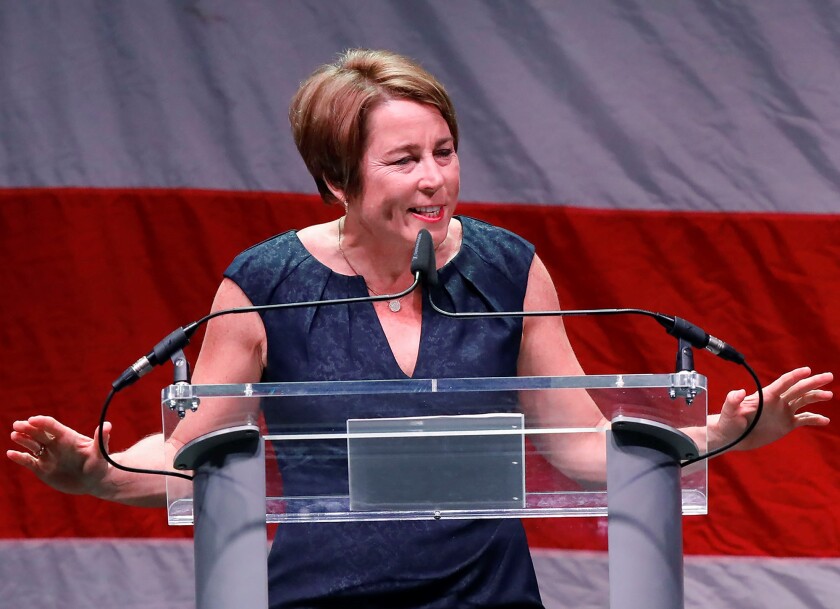
Yet 19 states have never had a female governor; only 45 women have ever held the position. Why? Not enough women have run. From 2006 to 2020, 61 women (41 Democrats and 20 Republicans) were major-party nominees for governor, while 357 men (168 Democrats and 189 Republicans) were their parties’ nominees. When women run,they have an excellent chance of winning. Between 2006 and 2020, while female Democratic gubernatorial candidates were somewhat less successful than male Democrats (36.8 percent of females won compared to 45.8 percent of males), the opposite was true for female Republican gubernatorial candidates: GOP women were more successful than men (65 percent to 54 percent).
So the challenge is not winning, but running. Women do not run at the same rate as men. Men usually self-select to run. Women often must be recruited. As researchers Jennifer L. Lawless and Richard L. Fox wrote in their 2018 book Women, Men & U.S. Politics, women too often do not see themselves as qualified to run for office and thus are less likely than men to do so. In a 2013 report, Girls Just Wanna Not Run, Lawless and Fox argued that recruitment of females is crucial to increasing the number who run.
Further, women are more likely to win races when they have political experience. As researchers Valerie R. O’Regan and Stephen J. Stambough documented in 2016, women with prior statewide office experience have greater electoral success in gubernatorial races than women without that experience.
Political experience is just one of the factors that is likely to come into play this year, when 36 states are holding gubernatorial elections. We collected data for every announced gubernatorial candidate, 421 in total (93 of whom are females). The data tells a few stories. 2022 looks different from 2018 when these same 36 states elected governors:
• As of the Aug. 9 primaries, 36.7 percent of the candidates advancing to the general election were female, up from 25 percent in the comparable election of 2018, 12.7 percent in 2014 and 13.5 percent in 2010. From 2006 to 2020, only 14.6 percent of major-party nominees for governor were female.
• As this year’s election cycle unfolded, there was growth in announced female candidates, not only in numbers but in the percentage of all candidates. Women make up 22.1 percent of candidates this year, up from 19 percent in 2018. Growth is especially strong for Republican women, who are 19.4 percent of all Republican candidates, up from 13 percent in 2018. The number of Democratic female candidates has increased as well, rising from 24 percent to 26.8 percent of candidates from their party.
• Forty-three percent of women running this year have political experience versus 34 percent of males. Democratic women have more political experience than other candidates. Over half, 52.5 percent, of Democratic female gubernatorial candidates have held elective office. In contrast, only 37.7 percent of Republican females, 36.7 percent of Democratic men and 31.1 percent of Republican males have elective-office experience.
One factor restricting the political experience women can gain is term limits. As Close the Gap California’s executive director, Susannah Delano, toldCalMatters, “We’re constantly facing the dual challenge of women who have termed out or retired, needing to replace and backfill them … and then also recruiting new women to go ahead and challenge and drive the overall numbers up.” While term limits impact all candidates, male candidates are more likely to choose to run for office no matter their background or level of experience. They self-select. Women need encouragement and experience in order to succeed in an election. When the ability of women to gain experience is cut short, we limit the pool of female candidates.
Recruitment appears to be working. There are at least seven nonpartisan, two Republican, four Democratic and two “other” groups working to recruit and train female candidates. Republican leadership is working hard to recruit females to run, particularly for governor, creating Right Direction Womenfor this purpose. Emerge California is a state-level group helping train Democratic females to run. The group reports a significant increase in requests for training in recent years.
But the growth of Republican female candidates in 2022 is too strong to simply be explained by increased recruitment. There also may be a Trump and COVID-19 effect among Republican women. Women are still expected to do most of the parenting and elder care, and the COVID-19 response has been a partisan issue. Thus, it makes sense that females might feel the impact of pandemic restrictions and mandates differently than males. On top of this, the former president emphasized and glorified distrusting those with political experience, which may help explain the increase in Republican female candidates.
We won't know the impact of Trump and COVID-19 on the number of women governors until after the voters have had their final say in November’s elections. But we do know that the most important stepping stones are recruitment and political experience. Gates that block those steps should be removed.
Alana S. Jeydel is an assistant professor of political science at Fresno City College. She has published two books and numerous journal articles in the area of women and politics. William R. Wilkerson is a professor of political science at SUNY Oneonta. He studies U.S. politics and American law and courts.
Governing's opinion columns reflect the views of their authors and not necessarily those of Governing's editors or management.
Related Content












